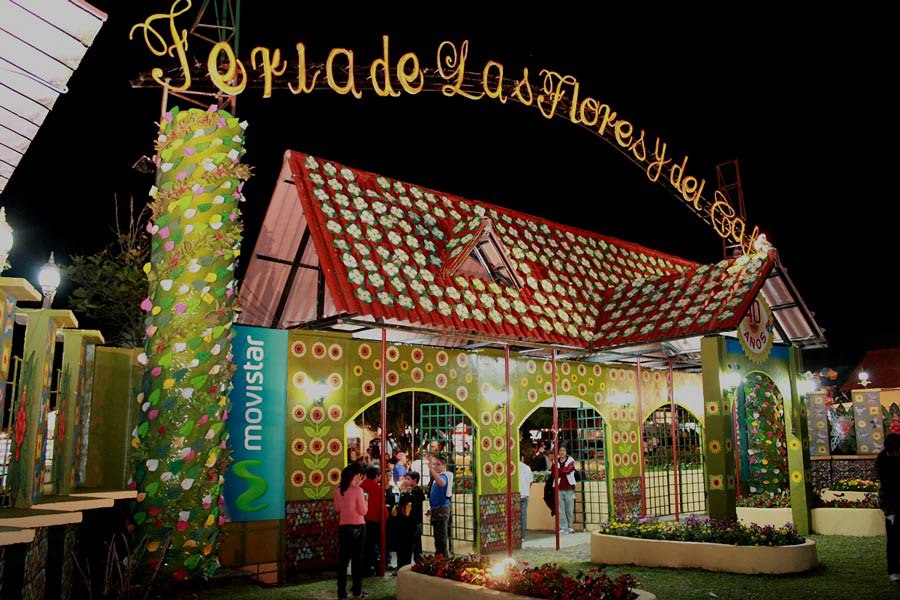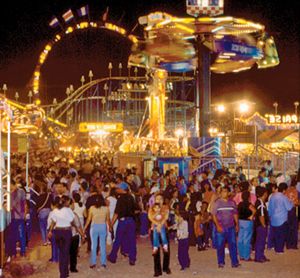Panama’s International Fairs

Boquete International Flower and Coffee Fair January 10 – January 19 Boquete, Chiriqui This year, from January 10 to January 19 the banks of the Caldera River in Boquete will be lined with colorful flowers, stands of locally grown coffee beans and artisans selling handmade crafts The Boquete Flower and Coffee festival is back, like past years the town will host hundreds of visitors from inside and outside of Panama to travel to the flower capital of Panama, Boquete. The Boquete International Flower and Coffee Fair has grown to become one of Panama’s most well known fairs. Spectators travel from all over the world to take in the beauty and aromas the festival has to offer. Since the gardens are the main attraction at the festival, seeds are sown as early as May to ensure flowers are flourishing by the time January rolls around.
The Boquete Flower and Coffee fair is a longstanding tradition in the region of Chiriquí, Panama. In it’s beginnings the fair was held in the month of April. The first festival was held in 1950. Back then the festival was held only when the community was prepared for it. Between 1950 and 1969 the Coffee Festival, as it was called then, was held only four times (1950, 1957, 1961 and 1969).
On April 9 1970, things changed for the festival. One day before the opening of the fifth festival, the district was affected by severe flooding in which many residents lost their homes. The festival would have to be cancelled that year. Faced with this adversity, the community of Boquete pulled together to work on the following year’s festival, to exhibit the best of the countries flowers and coffee. From that year on the festival would be held annually.
From 1973 onwards the fair came to be known as the Boquete Flower and Coffee Fair. Starting in 1992 the festival would be held in January at the end of the rainy season. The date change would allow plants and flowers more time to cultivate.
The festival is not only a means of displaying the cultural and natural diversity of the region, but a way of supporting the local economy. The fair has become a large community event bringing together local and foreign botanists, coffee farmers and artisans.
 Chorrera International Fair
January 23 – February 3
Chorrera, Panama
Chorrera International Fair
January 23 – February 3
Chorrera, Panama
The La Chorrera International fair is one of the biggest agricultural fairs in Panama. Taking place towards the end of every January, the fair is reminiscent of a traditional country fair. The purpose of the fair is for farmers from across Panama and neighboring countries to come together to buy, sell and trade livestock and agriculture. A by-product of the fair is that it also offers a unique taste of Panama, from the traditional dances of tipico and reggaeton to traditional fair foods.
This year Chorrera will host their 53rd fair from January 23rd to February 3rd. As always the air will be held at the grounds near the Pedro Pablo Sanchez School in La Chorrera.
Each day’s events begin early in the morning. The days are filled with animals, food plants, women in polleras and men in Panama hats.
Like many fairs, the food is one of the main attractions for many. The good news is that the majority of tasty treats are available for under a dollar.
Some traditional menu options include bollos, tamales and carne palitos.
Bollos pronounced “boyos”
Bollos are traditionally made with new corn (fresh off the ear). Since corn is in season in January, the fair is a great time to try one! Bollos frescas are made from fresh corn ground up to make corn milk, which is mixed with, butter, salt, sugar and coconut are added to create dough. The dough is then rolled out into a cylindrical shape and wrapped in the husk of the corn or a sugar cane leaf. Once wrapped, the bollos are placed into boiling water for about 20 minutes before they are read to serve.
Bollos can also be made with old corn (dried corn) when corn is not in season.
Bollos preñao (pregnant bollos) are similar to the traditional bollo but with meat or chicken inside, kind of like a tamale.
Panamanian tamales
Panamanian tamales are a tradition around Christmas time. Made with old corn Although also made from corn tamales are actually quite different than bollos. Filled with chicken or pork, tamales are more savory than sweet and are sometimes served with a sauce for dipping.
Panamanian tamales are traditionally wrapped in ojas de tallo (stem leaves) or plantain leaves.
Carne Palitos (meat on a little stick) Carne palitos are a popular street vendor snack in Panama. Small bite size pieces of beef or pork are skewered and cooked on a charcoal grill. If you like spicy ask for some salsa picante. Carne Palitos are less than .50 cents and you can probably swing a deal if you are buying multiple.
North American style snacks are also sold at the fair. Fairgoers can enjoy hotdogs for .25 cents, hamburgers for $1.00 and sausages for $2.00. Wash it all down with some jugo de cana (cane juice) for only .30 cents a class.
For dessert, “algodón de azúcar” or in English, cotton candy.
The fair grounds are large so it takes awhile to explore everything available. Along the way you will stumble upon some children’s rides, an agricultural section with this years prized cows and some of Chorrera’s famous pineapples. The agricultural section also offers horseback rides for children.
